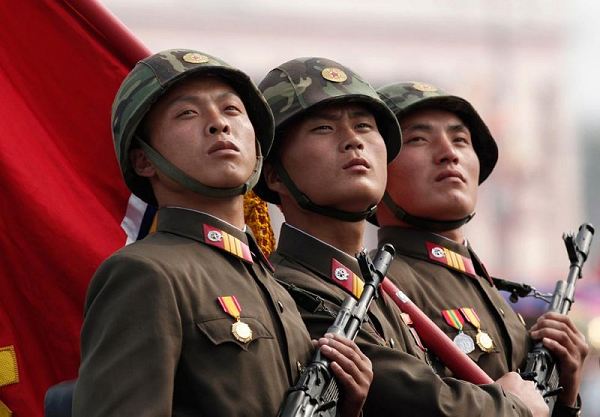 (Photo: Army Recognition.com)
(Photo: Army Recognition.com)
by David Parmer / Tokyo
Media reports on the DPRK military are often like the story of the blind men and the elephant. In the story each man grasps a different part of the beast and gives a different and wildly-divergent impression. The 2013 report by the U.S. Defense Department to Congress on North Korea gives an overall view that puts piecemeal reports by the press in a more understandable context.
The North Korean threat to the region is real, and it is an instrument of national policy. The raison d’être for DPRK forces are seen to be twofold; to keep the regime in power and to prevent any significant attack from the ROK, U.S. Japan or an expeditionary force made up of these three countries. At the same time, this capability enables the country to pursue a bellicose, contrarian and concession-extracting foreign policy.
North Korea fields a large, forward-deployed military that retains the capability to inflict serious damage on the ROK, despite significant resource shortfalls and aging hardware. (U.S. Dept. of Defense)
North Korean technology in conventional arms is far behind current world standards but effective. Aircraft date from the 1990s or earlier. While the DPRK has one of the world’s biggest submarine fleets, it along with the Navy (mostly a costal force) are seen as outdated technologically. Vintage Russian and Chinese designs are a big part of the defense mix. The DPRK has the 4th largest military in the world, with 70 submarines,13,000 artillery pieces and substantial armored and infantry units as well as its vintage air force. On paper this looks impressive, but the Pentagon cites serious shortcomings in the military machine of Kim Jong-un. Specifically:
- Logistic shortages
- Aging equipment
- Lack of training
Despite these shortcomings, the threat from the north is credible. It starts with its artillery and rocket forces. Estimates suggest an artillery inventory of 13,000 pieces, many in hardened sites and targeting the territory south of the DMZ and Seoul itself. A second element in the threat is North Korean special forces (SOF). Other sources suggest that as many as 200,000 SOF personnel are on duty. These troops are seen as well equipped, highly motivated professionals capable of being inserted by land sea or air into the ROK to cause havoc and strike high-value targets such as air fields or command centers. Next comes the DPRK’s cyber warfare capability. In a cash-strapped national economy, cyber warfare can deliver a big return on investment. The Pentagon’s report suggests cyber attacks have already been launched on the south, with incidents of Denial of Service (DOS) attacks being attributed to the DPRK. And finally, the tip of Kim Jong-un’s spear is his rocket forces: short and long range missiles, less than sophisticated by world standards, but capable of getting the job done-i.e. threatening both his regional neighbors in China, ROK and Japan, but also the west coast of the United States. It seems that is only a matter of time before North Korea can perfect the launch and re-entry of an intercontinental ballistic missile capable of carrying a high yield nuclear warhead.
Seen from the Pentagon’s report, the military machine of the DPRK is a well-planned and well thought out instrument of national policy using strategy and limited resources to confront better equipped, better supplied and better trained potential adversaries. And so far this strategy seems to be working just fine.
U.S. Department of Defense Report on North Korea 2013
http://www.defense.gov/pubs/North_Korea_Military_Power_Report_2013-2014.pdf
 日本語
日本語 English
English 中国語
中国語